
Interview with Václav Hlaváček
On the occasion of the tour of the recently completed high-rise building I in the Brno Vlněny complex, we had the opportunity to ask Václav Hlaváček a few questions, whose studio Acht is behind the transformation of several Brno brownfields as well as the long-term reconstruction of the Prague Castle complex. The Acht studio is characterized by a long-term partnership with the investor and the continuous development of one place. In addition to the current projects it is involved in, we were also interested in how the studio was founded and what it brought from the Dutch environment.
Before we get to the current projects of Studio Acht in Brno, could you describe your journey towards an architectural career and how your connection with the Dutch studio came about?
It's almost a romantic story from the 1990s. In the 1980s, I was employed at SÚRPMO (State Institute for Reconstruction of Historic Towns and Buildings) and that’s where my working relationship with Prague Castle began. At the end of the 1980s, I also began working for German and Austrian clients. I was in regular contact with colleagues at RWTH (Rhineland-Westphalia Technical University) in Aachen.
In the then regime, I was seen as a bit of a rebel, but I actively mastered German and received good recommendations from clients in the development world. I led projects from the initial sketch through to technical supervision. In the evenings, I drew, always eager to learn something new. Eventually, as a fresh graduate, I got the chance to go work in Regensburg, where I would participate in projects for Berlin or Graz, where I was interested in continuing postgraduate studies.
If I blame the previous regime for anything, it is where they brought this country in terms of foreign language skills. The frustration remains with us to this day. I hope younger generations don't feel it as much anymore.
At that time, I already had a family. One German architect recommended that I stay in Prague and work for foreign investors. Through an excellent Austrian investor who had already been collaborating with the Dutch studio Acht, I got my first contracts. The Dutch worked from the concept, including economic analysis, which are valuable experiences that you don't learn in school. In the early 1990s, many small studios were emerging, learning through trial and error. I wanted to connect with someone who already had experience. The creative aspect and economic viability are the keys to a good design.
In practice, people associate an architect with someone who complicates the construction process with nonsensical demands.
I also consider myself an artist. A creative person doesn’t have to be just a musician, painter, or architect; they can also work in a restaurant, a craft workshop, or as a teacher in a school.
But back to the beginnings of Studio Acht.
In 1992, I met colleagues from Studio Acht, traveled to Rotterdam, where I got to know Ben Hoek, Ronald Vermaas, and others who founded the office back in 1973. Similarly to the rivalry between Pardubice and Hradec Králové, there is competition between Amsterdam and Rotterdam in the Netherlands. I always felt closer to Rotterdam. I was fascinated by the city's vibrancy filled with students and sailors. There, during one weekend, I immediately understood that their viewpoint on concept, Dutch aesthetics, tradition, progress, and moderation suited me. I traveled to the Netherlands once a month for a few days, but I otherwise ran the office in Prague. I would automatically leave on Thursday evenings for the Netherlands and return on Sundays. It required a lot of commitment, but I found that I could keep up with their pace, which positively boosted my confidence in that it didn't bind my hands and I wasn't afraid to do something. Tradition in architecture is not very common, as you try to build upon the work of your predecessors.
Modernism tried to completely part ways with history.
I mean more of a personal approach. Typically, studios are centered around one creative individual or duo, and it is very complicated to carry on through generations. Not so much in terms of trends, influences, or conditions, but in personal responsibility and continuity in aesthetic opinion.
In the Netherlands, there are prominent figures like Koolhaas or Maas, who attempt to stir discussion with their designs, and then there is the moderate path that continuously connects to brick architecture.
The tendency to seek new directions is evident in all. They have an incredibly good foundation for it.
Are you referring to support from the state and authorities?
No, in terms of craftsmanship. They fully respect the craft, but this position had to be fought for over the years. Another thing I blame the communist regime for is the total devastation of public taste. I dislike casting, which is not necessary in the Netherlands. Moreover, everyone there is used to collaborating. Of course, healthy competition exists, but when there is an interesting investor, a city, and a task, everyone sees a common challenge and joins forces. During my travels around the world, I meet many young studios eager for further learning. For the Dutch, the Czech Republic is an interesting place, and they would like to build here, but so many competitions have been mishandled here, and so many poorly defined projects have occurred that some fear venturing into the Czech environment.
Recently, Dutch and Scandinavian offices have been successful in architectural competitions here. Just mentioning the expansion of Prague Airport (MVRDV), the completion of Wilson Station (Henning Larsen), or the Vltava Philharmonic (BIG).
Yes, they are favored.
One of your recipes for success is continuity and stability. You try to find a common language
and you collaborate with several investors for several decades.
I claim that architecture can have many different forms of practical application. One can be an excellent theorist. By the way, we have very few of those. You can be a good designer or analyst, but I still believe that the essence of our profession is building. Once, this was nicely formulated in a book My Plans by architect Jan Sokol, who is also a bearer of a certain Dutch tradition, and who was utterly destroyed by the communists after the coup. Sokol, at the end of his life, reflects and looks at the chest with his drawings, saying that it should be like this and that one should build despite all the difficulties imposed by the communists.
In this spirit, professor Jiří Suchomel established a school of architecture at the TU in Liberec in the mid-1990s, where the teaching was primarily based on studios led by practicing architects who could pass on as much of their practical experience as possible.
You cannot search for continuity in such a way that if you have a blue aesthetic, your successors will also have to have a blue one. Primarily, it should be fundamentally correct. There are certain harmonic patterns and compositional schemes that can be exceeded to some degree. Sometimes you should try it differently, but the foundation must resonate. That’s how tradition and skill are built. Today we have a hundred people in eight studios across the republic.
The last information I found was that sixty people are working in four studios.
We are growing not because we want to, but simply because we are trying to meet all commitments. We also have a student scholarship program in the studio. Eventually, you find that every person is somehow interesting, but they must primarily be hardworking. They must want it and enjoy it. If they are not enjoying it, they might as well not do it. Some are more technically gifted, others more organizationally, some are more designers and aesthetes. Conversely, I’m disappointed when I sit on a poorly defined competition jury, where awards are given, but it is evident that neither the client nor the solver knows the area thoroughly. Generally, I don't have much trust in competitions.
But it is one of the few opportunities for starting architects without greater contacts to get contracts.
Let them announce competitions, but they should have their briefs well-defined, which hasn’t been happening much lately. If you want to support young talents, help them. Come up with a proper brief and don't let them dangle in the wind. Even in creative work, some limits must be set, so they do not lead them down a wrong path. Experienced architects are expected to adjust the briefs, look for errors where something does not add up. The clients should reflect on why someone did not meet the requirements. Usually, they are excluded.
Yet, if there hadn’t been an enlightened jury, Hubáček's tower at Ještěd would not have been created fifty years ago, which violated the brief in favor of the overall solution.
And many other great projects.
Your realizations are not just about the building itself; you pay significant attention to shaping the surrounding environment, including natural elements.
In life, I have learned that three things must perfectly play on the construction site. The concept, the brief, and the connection to the environment. I do not mean that sweet connection that I dislike, in the sense that if the neighboring houses have a sloping roof, then you must also make a sloping one.
You apply Dutch building culture here, considering the broader environment, and hope that others will notice it and pursue a similar path.
I wouldn't want to be labeled as someone who has been preaching about the Netherlands for thirty years, but the Dutch have no choice but to actively work with the landscape since a large part of the country is below sea level.
Their designs are not limited to houses; entire cities and new islands are created in record time.
That's right. Moreover, these are not fantastical projects, as they have a financial breakdown from the very beginning: concept, landscape, and finance. Everything is clearly formulated from the start on one A3 page.
In the Czech Republic, everyone complains about lengthy building processes and subsequent construction, but in your case, you have everything excellently coordinated and smoothly transition from one large project to another. How do you keep an eye on this aspect?
That is one of the advantages of long-term collaborations.
When Vlněna is completed in 2026, can you mention where your attention will turn next?
In the Ponávka area, we have a large multifunctional project A4 underway, where residential use actually predominates over stores and offices, but I cannot speak publicly about other plans yet. I will stay in Brno if the investor wants to continue. The projects are prepared, but with global investors, you fight daily with the demands to be constantly better. You are always in professional danger as they can afford to hire anyone from around the world. This "Sword of Damocles" can be perceived as a driving force, motivating you to not be afraid, continuously improve, and always seek.
In Brno, your works are concentrated around former industrial areas, to which you are trying to breathe new function and new life. During visits, I have the impression that the projects are not primarily focused on quick profitability, but on the gradual improvement of the entire surrounding landscape. For example, the revitalization of the Ponávka embankment, which had been culverted for many years.
Ponávka is a longer discussion. It’s a rather complicated area. Within the site, we still have some reserves. I cannot speak for the investor that there is a lack of desire to further develop the area. I would like to return to another industrial area, which is the Černovice Terraces in Brno-Slatina, where the investor has ambitions to attract applied research at the world level. Czech universities do not satisfy the growing demand of companies for educated people. We live in the illusion of growing numbers of graduates, but their quality still lags behind Europe. Investors travel to universities from Nuremberg to Krakow. They have somewhat given up and started to cultivate their own professionals. Once again, I must mention the Netherlands, where the recipe 3S (Startup, Support, Scale) works excellently. Of 200-300 startup companies, only one succeeds, but that one immediately receives support to expand and gets into the sights of tech companies that finance it and push it forward as a society. Otherwise, Europe stands no chance in global competition. I don't believe we will get any help from the state. As long as the academic field views a certain type of architect as a commercial sellout and perceives the word developer as an insult, it will take a while longer.
Your studio engages in a wide range of projects from industrial areas to the reconstruction of historical monuments. How do you divide work? How do you keep track of everything going on?
Studios are divided into specialized teams. I primarily focus on concepts because if I couldn’t design and be part of the creative process, I wouldn’t do it. I enjoy organizing from a human perspective. I look for each person’s strengths and want them to do work that makes them happy. Some have a deeper relationship with monuments, others need more time for the result to be worthwhile. Some are good at negotiating during authorial supervision on construction sites. Some think better economically. I don't have an economist in the office. The whole team consists of architects and engineers. The wide range of our studio's work is also a survival question, rather than if we specialized only in one area.
When do you find the time to sketch amidst this rush?
I carry designs constantly in my head. I have drawn many things at gas stations while waiting at airports. I have experienced many meetings where I already had a concept worked out but had to stop at a gas station outside the city to change the project at the last minute. I often sketch together with others; when we consult, we also design simultaneously.
Since 2008, or perhaps even longer, you have been active in the Prague Castle complex, where you not only succeed in reconstructing historical buildings but also realizing new structures, such as the recent completion of the New Proboštství. How complicated is the task of convincing the heritage protectors of new interventions?
We enjoy working for the St. Vitus Chapter. We also design for other parishes. We are close to similar briefs. We also participate in smaller projects. We have adopted the parish in Ořech, where Jindřich Šimon Baar lived and worked. We are assembling his library, including purchasing works from antiquarians. On the other hand, we have done several large things, such as the reconstruction of the facades of historic buildings, which is a craft that is passed down from generation to generation and is slowly fading away. Generally, we do not have a bad reputation among heritage protectors, because for the long time we've been engaged in reconstruction, they could verify that we are not one-dimensional aggressors. I think architecture should be clear and fragile. Both of these positions create tension. By fragility, I mean human sensitivity. In the case of the New Proboštství, I must say that it was a well-defined competition not only from the perspective of heritage protection but also from the St. Vitus Chapter. They were open about the fact that part of the extension would serve commercial needs to generate income for the monuments, which is not a crime either.
Currently, Starbucks is located there, but in the future, anyone could be there. The main thing is to create quality spaces.
I don’t want to speculate on other tenants. For us, it was essential that during the work we discovered enormous reserves between the northern rampart and the modern collector from the 1980s. We managed to expand publicly accessible areas. People can now reach the northern defensive wall, from where there is a view of the Renaissance ball game hall in the Royal Gardens.
We have large concepts on the table that cover hundreds of thousands of square meters, but at the same time, we also enjoy making small artworks. The smallest and closest to my heart is the reliquary of John Paul II in St. Vitus Cathedral with a drop of the Pope's blood, who was a total titan for my generation, having ousted the communists from half of Europe. He represented a joyful and eager period, which, although hard, was moving towards unification, cooperation, and peace.
Studio Acht in the Czech Republic was founded purely because my colleague Kuijt heard on the radio during his commute to work in 1991 the call from Václav Havel for people to come to Prague, assuring them that the contemporary political scene would support them. Issues were addressed in a more open and trustful environment. Some may say the 1990s were a crazy time of hustlers and thieves, but also an opportunity for people who wanted to reconnect the two halves of Europe divided by the Iron Curtain.
Today, Europe seems to cherish the division between the West and the East in many ways. It seems to suit everyone. Yet it has never been so and never will be. When we talk about architecture and art, it is possible to find many Italian influences in the Czech environment historically. I believe that not working towards the cultural unification of Europe from Werfel to Dvořák is a great sin. All of us should act as trumpet players from Munich to Krakow, cooperating and proclaiming that we are Central Europe, we love it here, and we will do everything to ensure that this part of Europe, with its strong traditions, attracts and will be a model of cooperation and development in the future.
It's almost a romantic story from the 1990s. In the 1980s, I was employed at SÚRPMO (State Institute for Reconstruction of Historic Towns and Buildings) and that’s where my working relationship with Prague Castle began. At the end of the 1980s, I also began working for German and Austrian clients. I was in regular contact with colleagues at RWTH (Rhineland-Westphalia Technical University) in Aachen.
In the then regime, I was seen as a bit of a rebel, but I actively mastered German and received good recommendations from clients in the development world. I led projects from the initial sketch through to technical supervision. In the evenings, I drew, always eager to learn something new. Eventually, as a fresh graduate, I got the chance to go work in Regensburg, where I would participate in projects for Berlin or Graz, where I was interested in continuing postgraduate studies.
If I blame the previous regime for anything, it is where they brought this country in terms of foreign language skills. The frustration remains with us to this day. I hope younger generations don't feel it as much anymore.
At that time, I already had a family. One German architect recommended that I stay in Prague and work for foreign investors. Through an excellent Austrian investor who had already been collaborating with the Dutch studio Acht, I got my first contracts. The Dutch worked from the concept, including economic analysis, which are valuable experiences that you don't learn in school. In the early 1990s, many small studios were emerging, learning through trial and error. I wanted to connect with someone who already had experience. The creative aspect and economic viability are the keys to a good design.
In practice, people associate an architect with someone who complicates the construction process with nonsensical demands.
I also consider myself an artist. A creative person doesn’t have to be just a musician, painter, or architect; they can also work in a restaurant, a craft workshop, or as a teacher in a school.
But back to the beginnings of Studio Acht.
In 1992, I met colleagues from Studio Acht, traveled to Rotterdam, where I got to know Ben Hoek, Ronald Vermaas, and others who founded the office back in 1973. Similarly to the rivalry between Pardubice and Hradec Králové, there is competition between Amsterdam and Rotterdam in the Netherlands. I always felt closer to Rotterdam. I was fascinated by the city's vibrancy filled with students and sailors. There, during one weekend, I immediately understood that their viewpoint on concept, Dutch aesthetics, tradition, progress, and moderation suited me. I traveled to the Netherlands once a month for a few days, but I otherwise ran the office in Prague. I would automatically leave on Thursday evenings for the Netherlands and return on Sundays. It required a lot of commitment, but I found that I could keep up with their pace, which positively boosted my confidence in that it didn't bind my hands and I wasn't afraid to do something. Tradition in architecture is not very common, as you try to build upon the work of your predecessors.
Modernism tried to completely part ways with history.
I mean more of a personal approach. Typically, studios are centered around one creative individual or duo, and it is very complicated to carry on through generations. Not so much in terms of trends, influences, or conditions, but in personal responsibility and continuity in aesthetic opinion.
In the Netherlands, there are prominent figures like Koolhaas or Maas, who attempt to stir discussion with their designs, and then there is the moderate path that continuously connects to brick architecture.
The tendency to seek new directions is evident in all. They have an incredibly good foundation for it.
Are you referring to support from the state and authorities?
No, in terms of craftsmanship. They fully respect the craft, but this position had to be fought for over the years. Another thing I blame the communist regime for is the total devastation of public taste. I dislike casting, which is not necessary in the Netherlands. Moreover, everyone there is used to collaborating. Of course, healthy competition exists, but when there is an interesting investor, a city, and a task, everyone sees a common challenge and joins forces. During my travels around the world, I meet many young studios eager for further learning. For the Dutch, the Czech Republic is an interesting place, and they would like to build here, but so many competitions have been mishandled here, and so many poorly defined projects have occurred that some fear venturing into the Czech environment.
Recently, Dutch and Scandinavian offices have been successful in architectural competitions here. Just mentioning the expansion of Prague Airport (MVRDV), the completion of Wilson Station (Henning Larsen), or the Vltava Philharmonic (BIG).
Yes, they are favored.
One of your recipes for success is continuity and stability. You try to find a common language
and you collaborate with several investors for several decades.
I claim that architecture can have many different forms of practical application. One can be an excellent theorist. By the way, we have very few of those. You can be a good designer or analyst, but I still believe that the essence of our profession is building. Once, this was nicely formulated in a book My Plans by architect Jan Sokol, who is also a bearer of a certain Dutch tradition, and who was utterly destroyed by the communists after the coup. Sokol, at the end of his life, reflects and looks at the chest with his drawings, saying that it should be like this and that one should build despite all the difficulties imposed by the communists.
In this spirit, professor Jiří Suchomel established a school of architecture at the TU in Liberec in the mid-1990s, where the teaching was primarily based on studios led by practicing architects who could pass on as much of their practical experience as possible.
You cannot search for continuity in such a way that if you have a blue aesthetic, your successors will also have to have a blue one. Primarily, it should be fundamentally correct. There are certain harmonic patterns and compositional schemes that can be exceeded to some degree. Sometimes you should try it differently, but the foundation must resonate. That’s how tradition and skill are built. Today we have a hundred people in eight studios across the republic.
The last information I found was that sixty people are working in four studios.
We are growing not because we want to, but simply because we are trying to meet all commitments. We also have a student scholarship program in the studio. Eventually, you find that every person is somehow interesting, but they must primarily be hardworking. They must want it and enjoy it. If they are not enjoying it, they might as well not do it. Some are more technically gifted, others more organizationally, some are more designers and aesthetes. Conversely, I’m disappointed when I sit on a poorly defined competition jury, where awards are given, but it is evident that neither the client nor the solver knows the area thoroughly. Generally, I don't have much trust in competitions.
But it is one of the few opportunities for starting architects without greater contacts to get contracts.
Let them announce competitions, but they should have their briefs well-defined, which hasn’t been happening much lately. If you want to support young talents, help them. Come up with a proper brief and don't let them dangle in the wind. Even in creative work, some limits must be set, so they do not lead them down a wrong path. Experienced architects are expected to adjust the briefs, look for errors where something does not add up. The clients should reflect on why someone did not meet the requirements. Usually, they are excluded.
Yet, if there hadn’t been an enlightened jury, Hubáček's tower at Ještěd would not have been created fifty years ago, which violated the brief in favor of the overall solution.
And many other great projects.
Your realizations are not just about the building itself; you pay significant attention to shaping the surrounding environment, including natural elements.
In life, I have learned that three things must perfectly play on the construction site. The concept, the brief, and the connection to the environment. I do not mean that sweet connection that I dislike, in the sense that if the neighboring houses have a sloping roof, then you must also make a sloping one.
You apply Dutch building culture here, considering the broader environment, and hope that others will notice it and pursue a similar path.
I wouldn't want to be labeled as someone who has been preaching about the Netherlands for thirty years, but the Dutch have no choice but to actively work with the landscape since a large part of the country is below sea level.
Their designs are not limited to houses; entire cities and new islands are created in record time.
That's right. Moreover, these are not fantastical projects, as they have a financial breakdown from the very beginning: concept, landscape, and finance. Everything is clearly formulated from the start on one A3 page.
In the Czech Republic, everyone complains about lengthy building processes and subsequent construction, but in your case, you have everything excellently coordinated and smoothly transition from one large project to another. How do you keep an eye on this aspect?
That is one of the advantages of long-term collaborations.
When Vlněna is completed in 2026, can you mention where your attention will turn next?
In the Ponávka area, we have a large multifunctional project A4 underway, where residential use actually predominates over stores and offices, but I cannot speak publicly about other plans yet. I will stay in Brno if the investor wants to continue. The projects are prepared, but with global investors, you fight daily with the demands to be constantly better. You are always in professional danger as they can afford to hire anyone from around the world. This "Sword of Damocles" can be perceived as a driving force, motivating you to not be afraid, continuously improve, and always seek.
In Brno, your works are concentrated around former industrial areas, to which you are trying to breathe new function and new life. During visits, I have the impression that the projects are not primarily focused on quick profitability, but on the gradual improvement of the entire surrounding landscape. For example, the revitalization of the Ponávka embankment, which had been culverted for many years.
Ponávka is a longer discussion. It’s a rather complicated area. Within the site, we still have some reserves. I cannot speak for the investor that there is a lack of desire to further develop the area. I would like to return to another industrial area, which is the Černovice Terraces in Brno-Slatina, where the investor has ambitions to attract applied research at the world level. Czech universities do not satisfy the growing demand of companies for educated people. We live in the illusion of growing numbers of graduates, but their quality still lags behind Europe. Investors travel to universities from Nuremberg to Krakow. They have somewhat given up and started to cultivate their own professionals. Once again, I must mention the Netherlands, where the recipe 3S (Startup, Support, Scale) works excellently. Of 200-300 startup companies, only one succeeds, but that one immediately receives support to expand and gets into the sights of tech companies that finance it and push it forward as a society. Otherwise, Europe stands no chance in global competition. I don't believe we will get any help from the state. As long as the academic field views a certain type of architect as a commercial sellout and perceives the word developer as an insult, it will take a while longer.
Your studio engages in a wide range of projects from industrial areas to the reconstruction of historical monuments. How do you divide work? How do you keep track of everything going on?
Studios are divided into specialized teams. I primarily focus on concepts because if I couldn’t design and be part of the creative process, I wouldn’t do it. I enjoy organizing from a human perspective. I look for each person’s strengths and want them to do work that makes them happy. Some have a deeper relationship with monuments, others need more time for the result to be worthwhile. Some are good at negotiating during authorial supervision on construction sites. Some think better economically. I don't have an economist in the office. The whole team consists of architects and engineers. The wide range of our studio's work is also a survival question, rather than if we specialized only in one area.
When do you find the time to sketch amidst this rush?
I carry designs constantly in my head. I have drawn many things at gas stations while waiting at airports. I have experienced many meetings where I already had a concept worked out but had to stop at a gas station outside the city to change the project at the last minute. I often sketch together with others; when we consult, we also design simultaneously.
Since 2008, or perhaps even longer, you have been active in the Prague Castle complex, where you not only succeed in reconstructing historical buildings but also realizing new structures, such as the recent completion of the New Proboštství. How complicated is the task of convincing the heritage protectors of new interventions?
We enjoy working for the St. Vitus Chapter. We also design for other parishes. We are close to similar briefs. We also participate in smaller projects. We have adopted the parish in Ořech, where Jindřich Šimon Baar lived and worked. We are assembling his library, including purchasing works from antiquarians. On the other hand, we have done several large things, such as the reconstruction of the facades of historic buildings, which is a craft that is passed down from generation to generation and is slowly fading away. Generally, we do not have a bad reputation among heritage protectors, because for the long time we've been engaged in reconstruction, they could verify that we are not one-dimensional aggressors. I think architecture should be clear and fragile. Both of these positions create tension. By fragility, I mean human sensitivity. In the case of the New Proboštství, I must say that it was a well-defined competition not only from the perspective of heritage protection but also from the St. Vitus Chapter. They were open about the fact that part of the extension would serve commercial needs to generate income for the monuments, which is not a crime either.
Currently, Starbucks is located there, but in the future, anyone could be there. The main thing is to create quality spaces.
I don’t want to speculate on other tenants. For us, it was essential that during the work we discovered enormous reserves between the northern rampart and the modern collector from the 1980s. We managed to expand publicly accessible areas. People can now reach the northern defensive wall, from where there is a view of the Renaissance ball game hall in the Royal Gardens.
We have large concepts on the table that cover hundreds of thousands of square meters, but at the same time, we also enjoy making small artworks. The smallest and closest to my heart is the reliquary of John Paul II in St. Vitus Cathedral with a drop of the Pope's blood, who was a total titan for my generation, having ousted the communists from half of Europe. He represented a joyful and eager period, which, although hard, was moving towards unification, cooperation, and peace.
Studio Acht in the Czech Republic was founded purely because my colleague Kuijt heard on the radio during his commute to work in 1991 the call from Václav Havel for people to come to Prague, assuring them that the contemporary political scene would support them. Issues were addressed in a more open and trustful environment. Some may say the 1990s were a crazy time of hustlers and thieves, but also an opportunity for people who wanted to reconnect the two halves of Europe divided by the Iron Curtain.
Today, Europe seems to cherish the division between the West and the East in many ways. It seems to suit everyone. Yet it has never been so and never will be. When we talk about architecture and art, it is possible to find many Italian influences in the Czech environment historically. I believe that not working towards the cultural unification of Europe from Werfel to Dvořák is a great sin. All of us should act as trumpet players from Munich to Krakow, cooperating and proclaiming that we are Central Europe, we love it here, and we will do everything to ensure that this part of Europe, with its strong traditions, attracts and will be a model of cooperation and development in the future.
The interview took place on April 25, 2024, in the Brno coworking Clubco
The English translation is powered by AI tool. Switch to Czech to view the original text source.
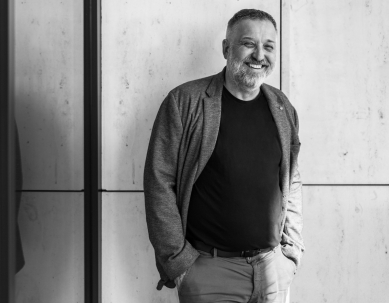
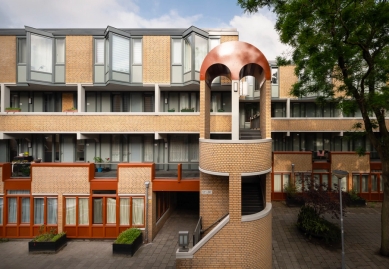
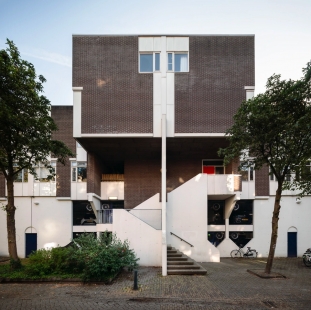
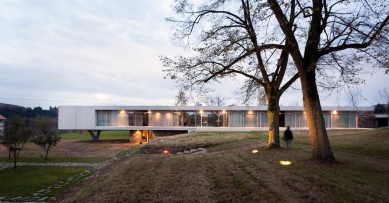
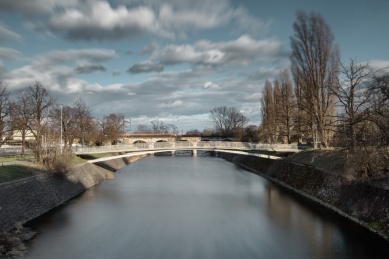


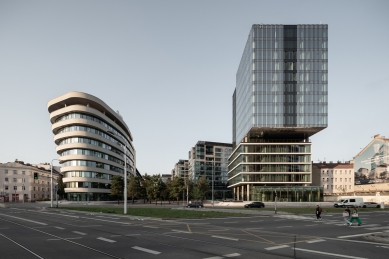


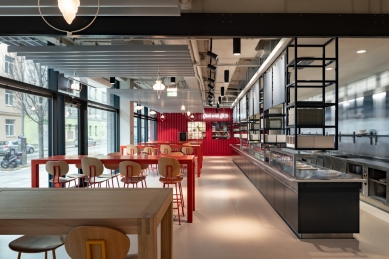
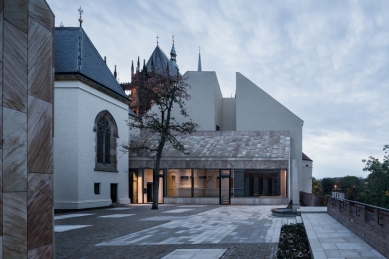
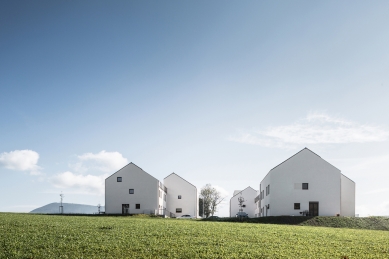
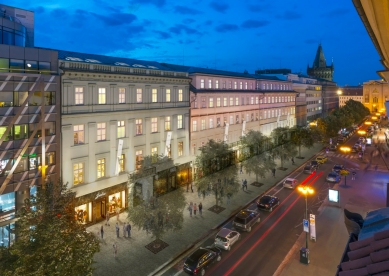
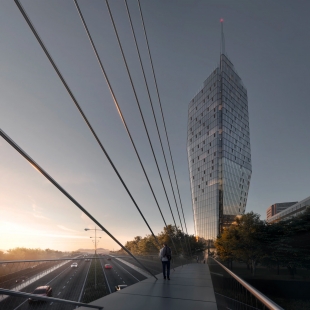
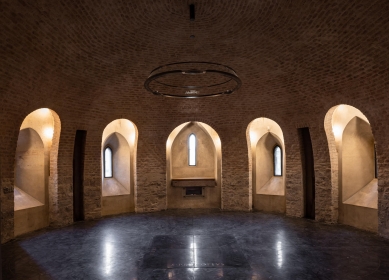
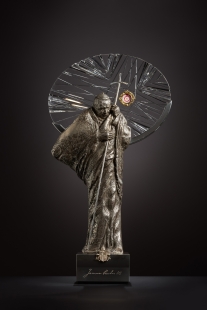
0 comments
add comment










